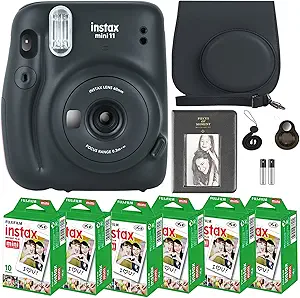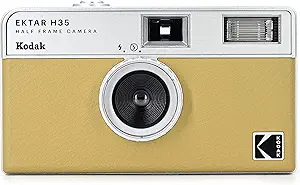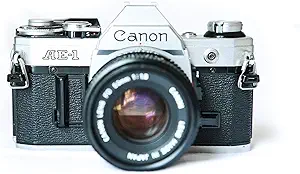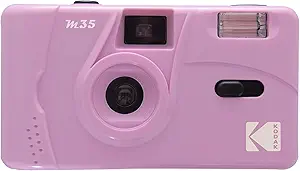The Ultimate Buying Guide for Film Cameras: How to Choose the Best Analog Camera for Your Needs
Overview
Film cameras may seem like a thing of the past, but they are still popular among photographers who appreciate the unique look and feel of film photography. If you are looking to buy a film camera, this buying guide will help you choose the best analog camera for your needs.
Types
There are several types of film cameras to choose from, each with its own unique features and advantages. Here are some of the most popular types of film cameras:
1. SLR Cameras - SLR (Single Lens Reflex) cameras are the most common type of film camera. They allow you to view the scene through the lens and provide a range of manual controls for exposure and focus.
2. Rangefinder Cameras - Rangefinder cameras are known for their compact size and quiet operation. They use a separate viewfinder to focus and compose the shot.
3. Medium Format Cameras - Medium format cameras use larger film formats than 35mm cameras, which results in higher quality images with more detail and better color accuracy.
4. Point and Shoot Cameras - Point and shoot cameras are simple and easy to use, making them a great choice for beginners or casual photographers.
Key Considerations
When choosing a film camera, there are several key considerations to keep in mind. Here are some things to think about:
1. Film Format - Consider what film format you want to use. 35mm film is the most common, but medium format and large format films are also available.
2. Lens Compatibility - Make sure the camera you choose is compatible with the lenses you want to use.
3. Manual Controls - Consider how much control you want over the exposure and focus of your shots.
4. Size and Weight - Think about how portable you need your camera to be.
Features
Film cameras offer a range of features that can enhance your photography experience. Here are some of the most important features to look for:
1. Manual Controls - Look for a camera with manual controls for exposure and focus.
2. Interchangeable Lenses - Consider a camera that allows you to change lenses for different shooting situations.
3. Light Metering - Look for a camera with a built-in light meter for accurate exposure readings.
4. Self-Timer - A self-timer can be useful for taking self-portraits or group shots.
Prices
Film cameras can range in price from a few hundred dollars to several thousand dollars, depending on the brand, model, and features. Here are some general price ranges to keep in mind:
1. Entry-Level Cameras - $100-$500
2. Mid-Range Cameras - $500-$1500
3. Professional Cameras - $1500+
Tips
Here are some tips for using and maintaining your film camera:
1. Store your film properly to prevent damage or degradation.
2. Keep your camera clean and free of dust and debris.
3. Use a light meter for accurate exposure readings.
4. Experiment with different film stocks and formats to find your favorite.
FAQs
Q: Are film cameras still relevant in the digital age?
A: Yes! Film cameras offer a unique look and feel that cannot be replicated by digital cameras.
Q: Is it difficult to find film for my camera?
A: No, film is still widely available online and in some camera stores.
Q: Can I use my digital camera lenses on a film camera?
A: It depends on the camera and lens. Some lenses are compatible with both digital and film cameras, while others are not.
Q: Do film cameras require batteries?
A: Yes, most film cameras require batteries for light metering and other functions.
Q: Can I develop my own film at home?
A: Yes, developing your own film at home can be a fun and rewarding experience.
Conclusion:
Choosing a film camera can be a daunting task, but with this buying guide, you should have all the information you need to make an informed decision. Consider your needs and preferences, and don't be afraid to experiment with different cameras and film stocks to find your perfect match. Happy shooting!













